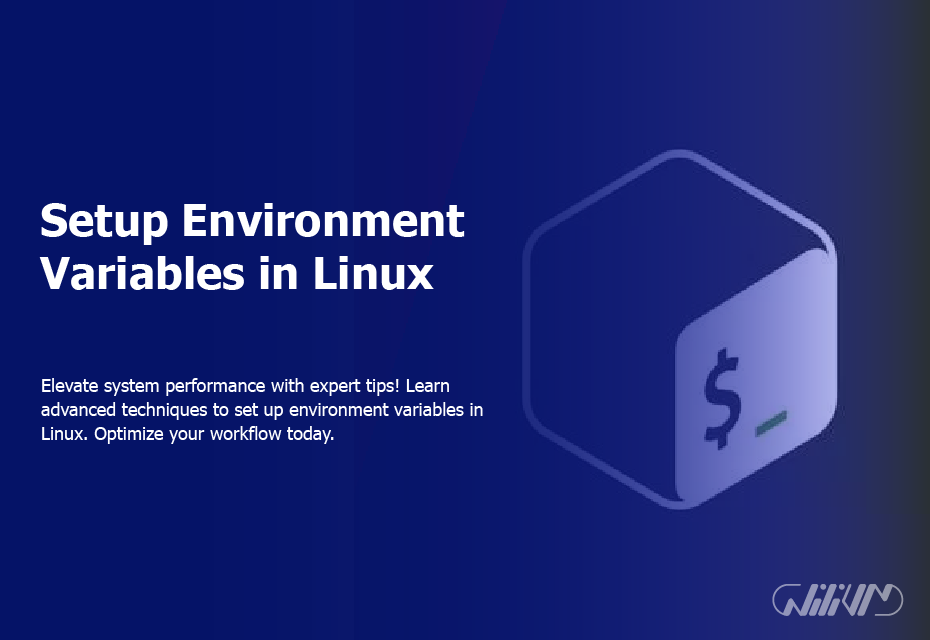Setup Environment Variables in Linux
Setting up environment variables in Linux is a skill that every developer and system administrator should have. Environment variables are dynamic values that can influence how processes on your system behave. They are essential for personalizing your working environment, controlling program setups, and assuring smooth application operation. In this post, we’ll delve into the world of Linux environment variables, looking at their significance, how to set them up, and practical applications.
Introduction to Environment Variables
What Are Environment Variables?
Environment variables are dynamic settings that affect how processes behave on a Linux system. They save data such as executable file paths, system preferences, and user-specific settings. Each variable contains a key-value pair, with the variable name serving as the key and the value serving as the value.
Why Are They Important?
Environment variables allow you to customize the behavior of software and programs without changing their code. By offering a standardized mechanism for communicating configuration data, they enable seamless interaction between different software components.
Get Linux VPS now for optimal performance. Learn about environment variables in Linux.
Types of Environment Variables
System-wide Variables
System-wide variables are global variables that apply to the entire Linux system and are accessible to all users. They are frequently used to specify default paths and system preferences.
User-specific Variables
User-specific variables are specific to individual users and take precedence over system-wide variables. These variables are useful for customizing user environments and setting personal preferences.
How to View Existing Environment Variables
Using the printenv Command
The printenv command displays all current environment variables in the current shell session.
Checking Variables in Specific Shells
Different shells (for example, Bash and Zsh) may handle environment variables differently. To view variables in your preferred shell, use the necessary commands.
Setting Up Environment Variables
Temporary vs. Permanent Variables
Only the current shell session and its descendant processes can use temporary variables. Permanent variables remain after the session has ended.
Using the export Command
The export command makes a variable accessible to child processes. Export MY_VARIABLE=value, for example, sets the environment variable for the current session and any child processes.
Modifying the .bashrc or .bash_profile Files
To make environment variables permanent, add them to your home directory’s.bashrc (for non-login shells) or.bash_profile (for login shells) files.
Common Use Cases
Configuring Path Variables
Path variables specify the directories where the system looks for executable files. They are essential for running instructions without supplying the whole route.
Setting Java Home
The JAVA_HOME variable is often used by Java programs to determine the Java installation location.
Database Configuration
Database connection strings, credentials, and other setup settings are stored in environment variables.
Best Practices for Naming Variables
Choosing Descriptive Names
To improve code readability, give your variables clear and meaningful names.
Avoiding Conflicts
Use a consistent naming convention and avoid utilizing names of existing system variables to avoid conflicts.
Managing Secrets with Environment Variables
Using Variables for Sensitive Data
When storing sensitive data such as API keys and passwords, environment variables are preferable to hardcoding them in scripts.
Security Considerations
When managing sensitive information through environment variables, use suitable security procedures, such as limiting access to authorized individuals.
Advanced Techniques
Variable Substitution
Variable replacement enables you to reference the value of one variable inside another, increasing setup flexibility.
Conditional Variables
Set variables conditionally depending on particular conditions to dynamically influence program behavior.
Verifying Variable Setup
Reloading Configuration
To implement changes after updating environment variables, reload the shell configuration with the relevant instructions.
Testing Variable Availability
To prevent unexpected problems, use conditional statements in scripts to check variable availability.
Troubleshooting Environment Variable Issues
Typos and Syntax Errors
Check variable names and syntax for mistakes to avoid problems.
Debugging with echo
To debug unusual behavior, use the echo command to display the values of variables.
Conclusion
An essential Linux skill for installing applications, handling preferences, and optimizing system performance is learning how to set up environment variables. You may make your working environment comfortable and productive by learning about the many kinds of factors, different ways to set them up, and the best ways to go about things.
FAQs
Are environment variables case-sensitive?
Yes, environment variables in Linux are case-sensitive. MY_VARIABLE and my_variable are considered distinct.
What's the difference between .bashrc and .bash_profile?
.bashrc is executed for non-login shells, while .bash_profile is executed for login shells. Use the appropriate file based on your use case.
Can I export variables between different shell sessions?
No, variables are limited to the scope of the current session and its child processes. To make them available across sessions, add them to shell configuration files.
Is it secure to store passwords in environment variables?
While it's safer than hardcoding passwords in scripts, it's not entirely secure. Consider using a password manager or other secure storage solutions for sensitive information.







